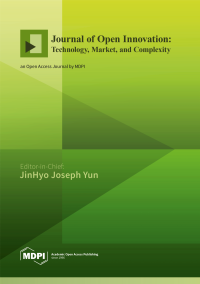Given the economic squeeze world over, search for what we call frugal grassroots innovations in Honey Bee Network, has become even more urgent and relevant in the recent years. And, to shape this search, models and concepts like open innovation, reverse innovation (GE, Market-Relevant Design: Making ECGs Available Across India, 2009); (Govindarajan, Reverse Innovation: a Playbook, 2012); (Govindarajan and Ramamurti. Global Strategy Journal, 1: 191–205, 2011); (Govindarajan and Euchner, Res. Technol. Manage, 55: 13–17, 2012, Govindrajan and Trimble, 40(5), 5–11, 2012), embedded innovation (Simanis and Hart, Innovation from the Inside Out, MIT Sloan Management Review, 2009), extremely affordable, low-cost, frugal innovation (Honey Bee Network, 1989–2016, Gupta, 2000); (Gupta AK, How Local Knowledge can Boost Scientific Studies, 2007); (Gupta AK, Indian Hidden hotebd of invention, 2009a; Gupta AK, http://anilg.sristi.org/harnessing-stimulus-forpromoting- innovations-and-entrepreneurship/, 2009b) etc., have emerged over time. We wish to trace the evolution of the Open Innovation Theory (Urban and Von Hippel, Manag. Sci. 34(5), 569–582, 1988) in the context of the Honey Bee Network working on such ideas for over 26 years. The idea is to study the different strands of relationships between knowledge providers and seekers which make the system truly reciprocal, responsible and responsive. When systems become open, search cost for inclusive innovation will automatically come down and the knowledge system will also become more symmetrical and inclusive. Inclusive innovation for social development implies that new solutions should help in dealing with one or more of the five factors of exclusion: spatial, seasonal, sectoral, skill and social. These should also be accessible, affordable, available and adaptable to varying and differentiated user endowments and needs, besides being circular. One has to understand the interaction between natural, social, ethical and intellectual capital, situated in the institutional context of innovations:
at,
from,
for and
with grassroots level communities for defining inclusivity in the innovation ecosystem. A company or a community, when in need of an innovative solution to a local problem, may seek it from outside, develop it inside, or co-create/contract it out. The nature of reciprocity between knowledge and innovation exchange partners may have different types of asymmetries (Bansemir and Neyer 2009). Different ethical principle enunciated in the Honey Bee Network may or may not be followed. The discourse on open innovation has been biased in the favour of corporates seeking ideas form outside rather than sharing their own innovation/knowledge as a public good or commons, or even at low cost with less-advantaged industry actors. In this paper, we reflect on such biases that companies and scholars have developed and propose a framework to temper it. The need for such a correction becomes even more important when various kind of climatic, institutional and market risks are making socio-economic systems more fragile and vulnerable to various uncertainties and fluctuations.
Coping with risks is significantly related to malleability of innovations. The process of evolving and nurturing innovations may have a bearing on their eventual adaptability to user. We argue that when both technology platform and application domains are known well, the
incubation model works. Generally, through this process, incremental innovation grows better. But, when both are unknown or are ambiguous,
sanctuary model works better. In incubators, the chaos is outside and the order is inside. In sanctuary, it is the opposite. It is not very surprising that sanctuary nurtures innovation which is more suited to fluctuating climate and market-uncertain environments.
Innovations don’t have relevance only at
artefactual level. One can learn at
metaphorical,
heuristic and
gestalt levels too. Building bridges between formal and informal knowledge systems poses a unique challenge in designing reciprocal and responsible open innovation platforms? This paper pleads for more reciprocal, respectful and responsible exchanges of knowledge between formal and informal sector adding value to the contributions of grassroots green innovators.
Full article



